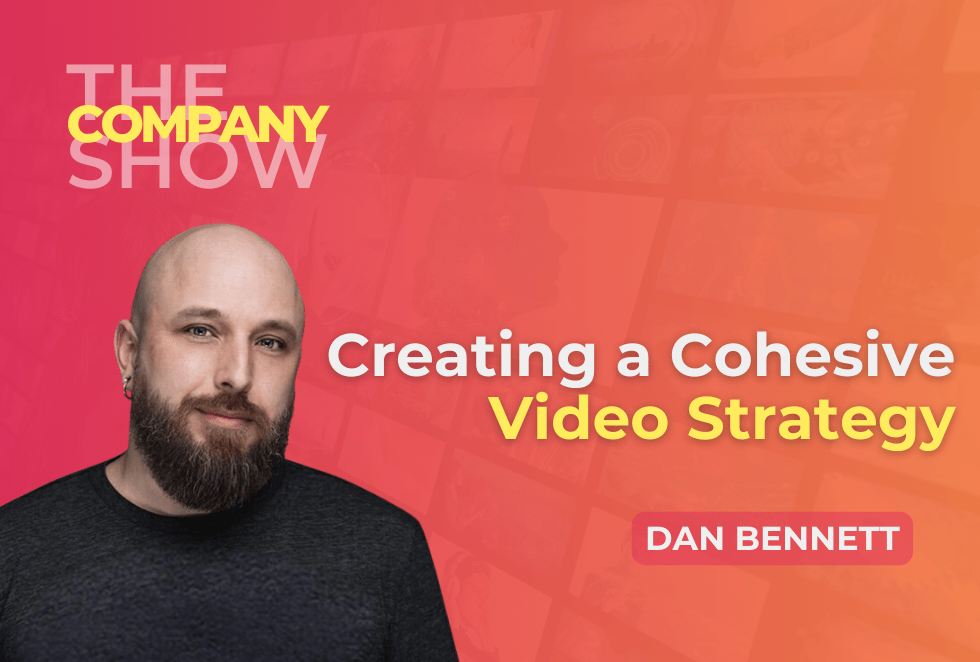Something that I’ve always found a little challenging when it comes to the marketing of my business is finding the stories that make what we do compelling. I can be rather a literal person.
I know what we do is valuable and our clients appreciate it — but as my business partner, and today’s guest is always saying: people connect with stories, and you need to create one that draws people in.
One of the ways to do this the most quickly and that sees the highest rates of conversion is by sharing video content for your business and your podcast.
Dan Bennet, the creator of Video For Entrepreneurs, has over 15 years in the video production industry and worked with brands like Harley Davidson and Bud Light before forming his company to help entrepreneurs with businesses of all sizes look and feel great on camera.
He is joining me today to talk about video and I know I’m not the only person who tends to shy away from it. Dan tells us how to be camera ready, explains his methodology of video content strategy and answers the question: is it really okay to share talking head zoom videos of your podcast?
Listen to the episode below or continue reading the blog post:
Tune in to the full episode to learn:
- The True Power of Video
- How to Bring Humanness into Your Business Videos
- Is Your Business Ready for Video?
- The Solar System Methodology
- Integrating Short-Form Videos into Your Strategy
- Why Storytelling Should Be Your First Focus
- Overcoming Camera Nerves with Simple Techniques
- Is a Talking Head Video Enough?
- Pre-production, recording, & post-production strategies
- Dan Bennett’s Body of Work
- Strategic deployment and sales as service
My book, Podcasting for Business is coming out this September — learn more about it here.
The True Power of Video
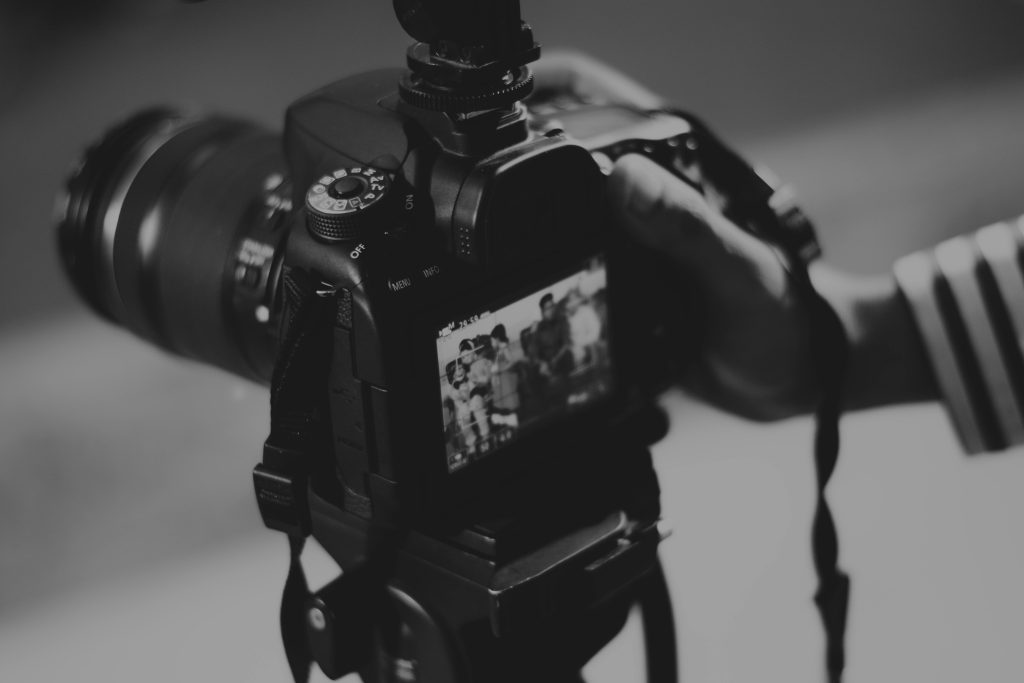
Dan: “It’s kind of one of my favorite parts about when I do workshops and stuff like that, because one of the first slides is: we’re all here for the real power of video and the secret is, and then I go to the next slide and it’s not video at all.
Essentially what I mean by that is video is the vehicle to take our story where it’s going. And what we put in the car, what we pack for snacks and a long drive is the real important part of video. So I don’t ignore those things.
We talk about technology, we talk about software, we talk about distribution of our videos when we’re done. But the real core of the work we do with our clients and students is around things like camera confidence, getting your story across, making things really punchy and engaging, how to make great video, being the stories we’re telling kind of inside of the video itself.
Megan: Oh, I love that. And I know my business partner, as she listens to this is going to be shouting, yes, yes, it’s about the stories and it’s about communicating that.
How to Bring Humanness into Your Business Videos
Megan: “Do you ever encounter, do you find entrepreneurs who don’t really feel like they have a story associated with what they do? It’s like they’ve got a set of services or they’ve got a set of products that they sell and it should be fairly self-explanatory. Where does the story fit in?”
Dan: “It’s usually in the humanness of it all. And there’s probably going to be five to 10 things I say as we talk that sound really cliché and maybe even a little heady, but it’s all absolutely true. And it comes from decades of working in a little bit of film and television, a lot of corporate work, a lot of government contracting where things seem very kind of rigid and stale and you have to find the story within.
I’ve worked with many, many CEOs of companies who are like, I just run the place, I don’t know, and have some really great stories of having my producer just roll and no one knows. And we’re talking about bass fishing or how my grandpa used to raise beagle dogs and they currently have a beagle and then we slowly move into business and 45 minutes later, I think we got everything we need and they’re like, wait, what? I’m like, yeah, man.
And that came from just being human, having a conversation and then taking that humanness and applying it to all of the whys of your business. Why did you make this? Why did you start? Why do you love helping people so much? Whatever the case may be. So even though it sounds kind of corny, that’s really what we’re focused on when we try to help people tell story, because everyone likes to get caught up in, well, once upon a time.
We love a good story framework. We use them all the time in our work, but we don’t start there. We generally start with things like exercises; just point your camera at your face, nothing fancy, no mics, no lights, no nothing — and just tell me about your favorite food, your favorite dish, the favorite vacation you had, where you had that dish.
For me, it’s my grandma’s apple pie. The whole thing, it’s cliché, but the smell and knowing it’s coming and it’s going to be hot for a while, so you can’t bite it right away. And that maybe she’ll give us ice cream this time. That whole thing means something to me.
And then for the rest of the time that we’re educating people and they’re like, man, I’m terrible on camera, we’ll show them their original video of look, you closed your eyes, you paused, you could smell it again. You told us about your trip to Paris and how the sauce is just different there. And people realize, oh man, I actually am kind of a good storyteller. It’s just when the camera comes on, sometimes I get a little bit, a little bit of stage fright — and we all have it.
I’ve been doing this forever and I still struggle sometimes. So it’s just kind of finding the natural storyteller in you. I tell a lot of people, if you’re going out to coffee or dinner with a friend you haven’t seen in a long time, just treat video like that. How you been? What’s going on? What are you excited about? What’s new? And get as close to that as we can.”
Megan: “I think that’s similar to advice we give people for recording their solo episodes or intro and outro content. I recommend people take a picture of someone they like and put it right next to their camera so they can be staring at that person.
It’s one thing to have someone like yourself guiding someone through creating video, which is such a pro move. If you want really good quality in that natural video. Staring alone into a camera is very weird, but it can really help just loosen you up to have that human.”
Overcoming Initial Fears and Finding Support
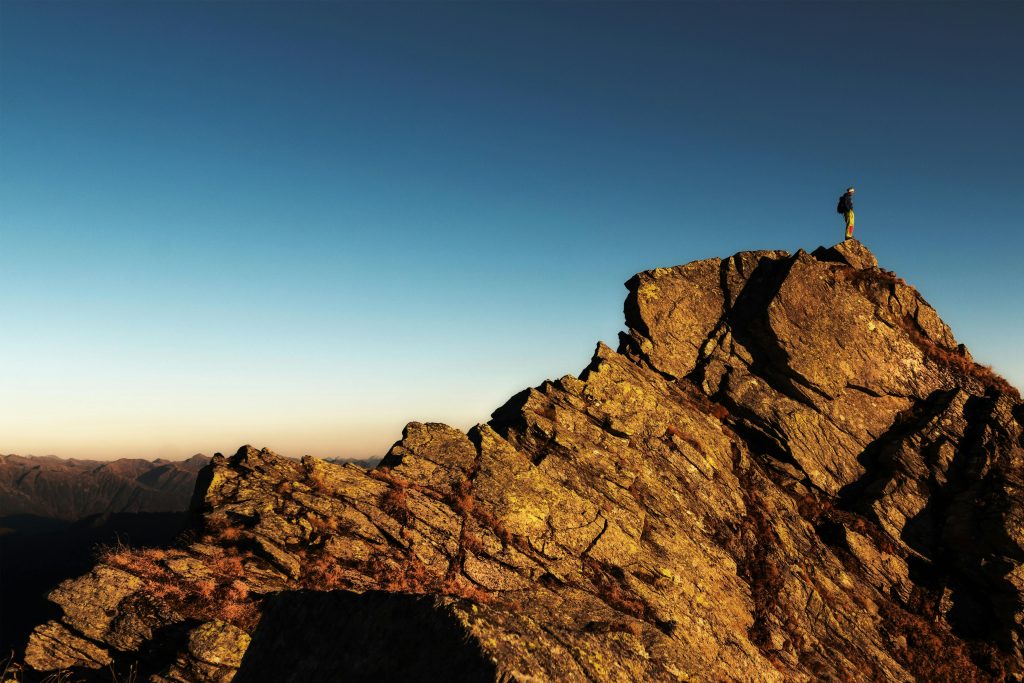
Megan: “What is your recommendation if someone is working alone or they just want to test their toes in the water a little bit. They are going to be doing it alone. Maybe they don’t want anyone to see their first attempts. How do they make sure their first try is a really good one?”
Dan: “Those are some of the first little fears that people have to get past. So never in our work ever are we like, get over it. It’s always, here’s a tool to get over it. It might only be some logs tied together with rope and it’s kind of dodgy, but we’ll get you over that ditch or that little cavern or spot that we’re dealing with.
We have a space in our community called the Video Sandbox and people share their ideas and then they share their rough drafts and it’s a safe place to get loving critique and feedback. We shoot you straight, but we love you while we do it before you put it out to the wolves of the internet.
So there’s a lot of different things like that. Maybe you can make up your own version of that. You don’t want to show the world, but you have someone you really trust who would tell you you have spinach in your teeth if you did. And you say, hey, I made this video. Could you give me some feedback? Don’t hold back, but I know you love me. So you’re not going to crucify me over this thing. So what do you think?
You can professionally tap into your network of people who are of a similar trust level and see if you can get some feedback there. It might be online community, might be private, just an email back and forth with someone or a DM. And then if you do have access to someone like me, take them up on everything they offer because I offer free strategy calls to people all the time. We have the sandbox.
There’s all kinds of ways — I like to do when I get in a pool, which is go down the stairs at the shallow end real slow. I’m not one to jump in the deep end.”
Megan: “Oh, I’m a jumper. It’s got to be a jump.”
Dan: “I love it. I’m so jealous of jumpers. I love it. But for those of us at the other end, I’m the stairs. I’m just like, here’s how you get down in here. It won’t feel good at first, but eventually we’re having a great time.”
Is Your Business Ready for Video?
Megan: “On the business side of things, some people who are creating, maybe someone’s got a podcast or maybe they’ve been a podcast guest. Those happen on video sometimes.
But what are kind of the indicators within a business that it’s a good time to start really deploying a video strategy rather than having video be like the occasional add on. When’s a business ready for that?”
Dan: “I think a lot earlier than they think.”
Megan: “Isn’t that always the way?”
Dan: “Best time to plant a tree, they say, right? It’s definitely probably earlier than you think or earlier than you’re comfortable doing so. And I think if you have something to say, and you can also allow yourself the grace of knowing this doesn’t have to be a promotional video, it doesn’t have to be an ad.
I don’t have to post this to get new clients. I just feel something about one of our products or this case study of someone we helped, or I want to share something about myself and how I was feeling as I did my work in my office last week or something. Don’t be afraid to share those things.
They don’t have to be a thousand percent transparent, a thousand percent intimate. They can be very high level and educational, but you can still give people a little dose of what your business is about beyond just the product or service.
I think people feel like they have to have a YouTube channel. They have to have ongoing content creation. They have to have a course that they’re building that’s video based before they can start. When really the stuff that generally resonates the best with people anyway is the everyday mundane 60 seconds — Hey, I had a thought and I wanted to share it with my audience. What do you guys think?
They always seem to do well in my world earlier than you think, and you know more than you think you do. I don’t want to take up too much time with it, but I got a little bit of a thought that I call body of work, that if there’s time at some point we should dive into, that goes a little bit against the grain of growing an organic audience and hoping to sell them things that I think could help the average person go, ooh, I do have a lot to say, and maybe I could be making videos right now.”
Megan: “Oh gosh. And so now my dilemma is do we get into that very interesting topic immediately or leave it as a teaser to the end of the episode? If this were a video you were producing, what would you do?”
Dan: “I’d wait.”
Megan: “Okay, body of work at the end. So everybody stay tuned.”
Dan: “It’s going to be a big reveal.”
Flexibility, Strategy, and Finding Your Gold Nuggets

Megan: “So let’s go back to what you were saying before that delicious teaser. You’re making the point that you don’t need to commit to all video all the time forever. Like in a podcast, you pretty much have to be consistent once you’ve decided to do it.
But you’re saying with video work and using video as a strategy, you don’t need to have that every Tuesday at four, I’m releasing my video.
What kind of flexibility is allowable within a video strategy?”
Dan: “I like that you put it in that order too, because we do have a decent amount of our clientele who are podcasters that added video to the mix after the show was established. And sometimes they’re like, Oh, here’s this another full line of production. And we often come in and remind them, we can just clip this occasionally. We can just have someone on your team go through the summaries. And if there’s like a big honking gold nugget, we’ll grab that and put it out.
It does not have to be a laborsome add on to what you’re doing currently, as long as the camera’s rolling and those videos might sit in an archive and never go anywhere — and that’s okay because you would have done the show anyway.
So I liked that you put them in that order because even within podcasting, if you start to film, you don’t have to commit to a whole other production stream to get some great stuff out there. And we’ve got plenty of videos where we can trace that one little satellite video floating around our solar system. It’s our methodology got on someone’s radar.
Then they went and watched one of our moon videos, which is our weekly video. And then they went from that to the top of the playlist on our YouTube channel, which is like a planet video, a deep dive with a strong call to action. Then all of a sudden they’re on a call with us.
That might happen in 24 or 48 hours in their world. And because you’ve left those breadcrumbs of someone never having heard of you all the way to maybe trusting you enough to jump on a call, that’s only four videos sometimes. And you can watch it happen.
It might be your gold nugget from your podcast that’s not a video podcast by any means. Might be getting someone onto the watching or listening to the show, which might get them on the show, calling in or wanting to be more a part of what you offer.
I think sometimes myself included, I’m talking to myself right now. We have to remind ourselves that that can happen. It doesn’t have to be the biggest, most well thought out, well-funded strategy. Sometimes just taking the time to share what you’re really good at or what you care about a lot. It’s enough for another human to go, Hmm, kind of like that.”
Megan: “I love what you’re saying there for a couple of reasons. One, because it’s very approachable and it can really easily be added to an existing strategy, but it seems like it, and correct me if I’ve got this wrong, but it works best when you do have a content strategy and you do have a path that you expect people that you have created for people to be able to take and you touched on your planets a little bit. I’d love if you can share that model because it’s very cool.”
The Solar System Methodology
Dan: “I’m always forthright about the fact that I did not invent it. It’s just hub and spoke. It’s been around for millennia. But I’m a metaphor and analogy guy, so I always need something to think about to keep my thoughts all in one place. And the gravity of the solar system does that for me.
So the sun and the solar system methodology is your big idea. It’s the thing that gets you up every day. Other terms are North Star, your why, if you’re a fan of Simon Sinek — when I wake up, I know my sun is I help entrepreneurs and professionals learn how to look and sound great on camera. That doesn’t mean I make videos about that topic. That’s just the thing that’s gotten me up having coffee at 6:30 and diving in and getting my work done.
Around that are planets. So if you think of hub and spoke, there’s a spoke and here’s some more hubs. Mine are very strategic and specific because of the work I do and who I want to help. So if you look at YouTube and you want to make great video, you’re going to find some of the big dogs out there talking about the best equipment, how to grow a YouTube channel fast and video and AI. We need them. Those are all important.
What we don’t need is another professional talking about those topics. So I like to dive another layer deeper. And I have three planets. I suggest to people don’t go over three, unless you’ve got a really large audience that can handle a lot of different topics. But one is fine too, you don’t need three. I have three, and they are camera presence, storytelling, and strategy.
I feel like video professionals drop the ball after the sexy stuff is over — the latest camera equipment and how AI can make video faster for you or whatever. Again, those are important and I love them. But where’s the next wave of people who are like, here’s how you get good on camera. Here’s how you deploy that video once you’ve made it. And oh, by the way, here’s how to tell a great story while you’re doing it so people care to actually listen, especially to the end.
Those are my planets and then around my planets are subsets of that topic that are a little shorter, a little more punchy, don’t have strong calls to action in the form of, get ahold of me or work with me or buy from me, and they generally end up in a playlist that you can watch and binge sequentially and learn an entire topic at your own pace and end up at a planet video that’s really deep with a strong call to action and possibly go, man, Dan knows this stuff. It’s like, he’s talking right to me. I should probably jump on a strategy call with him.”
Integrating Short-Form Videos into Your Strategy
Dan: “And then the last little bit is satellites just floating around your solar system. And that’s a short form.
Now there is full blown strategy around short form and we don’t really hit on that too much. Our short form that we help clients do, including myself is just 60 seconds or less. It doesn’t have to be vertical. It can be just introducing you to a quick win and who I am and that’s it.
And you might see 10 of those before you’re like, who’s this Dan guy keeps seeing pop up on LinkedIn. Maybe I should go check them out. And then I send them to my YouTube channel where it goes more in depth. It’s more kind of breadcrumby and they can get all the way to my big idea, which is I help entrepreneurs and professionals look and sound good on camera.
Knowing the next video I make fits into that framework, makes it so easy to ideate, to follow through and then make the next video. So that’s how we run it.”
Megan: “I can really see that because sometimes, you sit down, you get the blank page or the rolling camera paralysis. But you know, having: this week, I’m going to make moon content. That’s going to go around this planet video, which is about one of my key offers — it solves that problem. It sets the role going.”
Why Storytelling Should Be Your First Focus
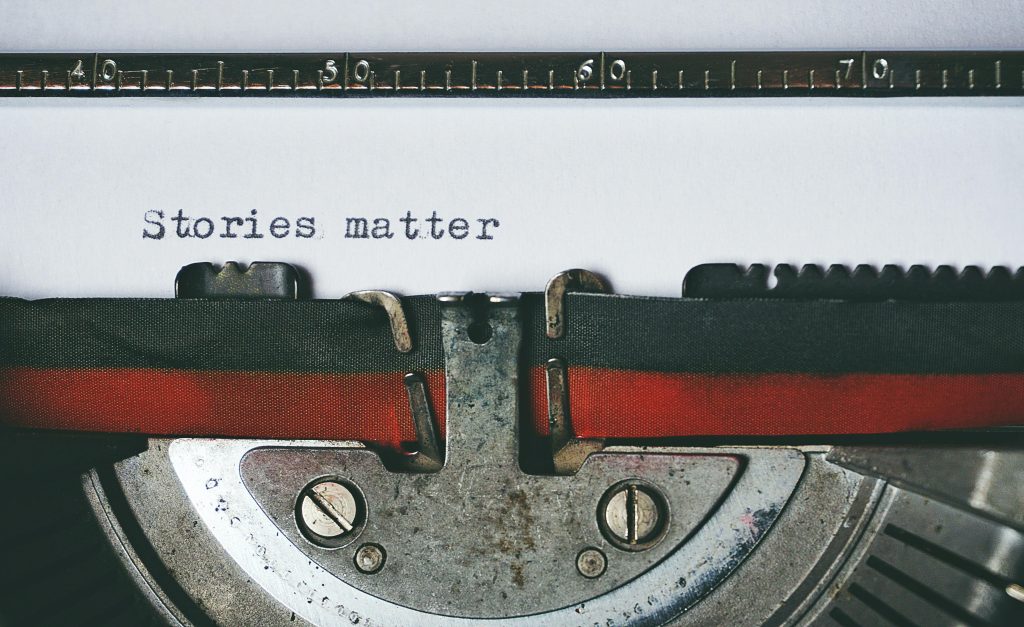
Megan: “When people are making that kind of content or they’re sitting out to make that kind of content or any kind of shorter form video content, let’s say less than an hour, do you recommend people think more about what story do I need to share and what do I want to communicate or what does my ideal watcher or buyer need to hear from me or need to see from me?
Where does the thinking start when you’re planning those videos?”
Dan: “Definitely on the former. I think the latter is important, but we don’t need as many videos on those topics and they can be really strategically placed and exist there for a while because those things tend to be a little bit more kind of evergreen.
The about me video, the big offer that’s been around a long time and it’s our bread and butter. Those videos don’t need to churn all the time or keep up with trends or anything like that. So definitely the former. And I think that it’s going to be so cliché, but I have to say it like you got to get reps in. It’s like going to the gym. The more videos you make, the better you’ll be, of course.
And then there’s kind of get the the frequency illusion. You buy a red minivan, you start seeing red minivans everywhere. What the heck’s going on? Because now your brain is keyed in. When you start thinking about storytelling, I’m not talking about taking classes or reading more fiction or anything. You just start thinking, man, I want to tell better stories. You’ll start to see stories in things like Shark Week or a commercial you just saw or a billboard that made you chuckle. And you’re like, wow, they took time to actually make that kind of funny because it’s a fun product.
You’ll start to see how storytelling is worked into everything around us and then you’ll start to tell better stories yourself because you’re thinking about it. Now that won’t get you all the way across the finish line, but it’ll make you better. And then once you start caring even more about story, that’s when you can implement frameworks and different things that help you really piece together.
But I think if you think about telling better story, it’s a great place to start as kind of generic as that sounds. And then trust yourself. If you think you’re a bad storyteller, trust someone near you who’s like, I love when you tell stories. Every time we get together, you got a different story. Trust that there’s a story in there.”
Connecting Storytelling to Your Product’s Core
Dan: “Even if it’s about you and how you felt about the product when you created it and not about the product itself, that is still a part of that product because people want to know how things work, where they came from and why. We always want to know why. And if we do a good job and we ask why, you know what they say, five times in a row.
You really get to the core of something and you can ask yourself that. Okay, I’m going to make a video about camera presence. Why? Well, cause a lot of people are afraid of cameras today. Why? Well, most of the time we’re finding it’s because they don’t really have a strategy and they didn’t grow up on stage or camera so they’re kind of stuck saying, I’m going to be terrible. Why? Well, because the human condition is to say, no, one’s going to like this. It’s all going to fail. Why? Well, because we didn’t want to get eaten by saber to tigers a long time ago.
You can drill down and understand, oh, this is a reptile brain type of fear I have about being judged and uncomfortable and maybe falling off Maslow’s hierarchy of needs and not being able to get back on where we’re accepted and loved. But maybe also I could combat that a little bit with telling some of my story or sharing something really important to me.
And again, I always want to give people permission. You don’t have to go all out. You don’t have to bear your soul, but little sprinkles of that stuff goes a long way.”
Megan: “I love that. And I think that it’s a skill that you can really work on and develop over time as you make more and more videos, or even as you said, have the camera rolling more often just so that it becomes a more familiar thing.”
Overcoming Camera Nerves with Simple Techniques
Dan: “I’ll share super quick something that’s really a breakthrough for a lot of people I work with is I tell them hit record on the camera and then do a breathing exercise. And your brain hates that that camera’s rolling and nothing’s happening. Even if you don’t do production, you’re like, but it just feels weird.
I’ve been doing this 20 years. It still feels weird to me. I always get a sticky nearby. You can’t see it, but it says space and grace on it. I always give myself the space to do this and the grace to not do it well. And if those two things are in play, I can let the camera roll for 30 seconds and then do a take and like, oh, we’re kind of warming up.
It’s like an Olympic athlete. They’re not going to go do the thing. They’re going to warm up. They’re going to eat well. And if you do those sorts of things, then you don’t have so much pressure of: hit record and nail it.
It’s hit record, close your eyes, breathe through your nose, get the heart rate down a little, do a couple takes. If it’s funny, laugh at yourself. The editor is never going to show that part to anyone anyway. It just all those things.
I like to remind people of, because that’s a breakthrough. A lot of times is that we’re not live on the news or Saturday night live. We can edit these things or we can choose to never show them to anyone. So space and grace.”
Megan: “Oh, I love that space and grace. It’s a beautiful idea and a beautiful thing to give to yourself and that you give to others. You are kinder person than I am. I just tell people their first one’s going to suck and they need to deal with that.”
Dan: “We need that though. Not to be too corny, but it’s such a balance. We need people in our lives who are like, Hey! And then we sometimes need — I call it the smack kiss. Stop doing that. I love you though.
We need both.”
Is a Talking Head Video Enough?
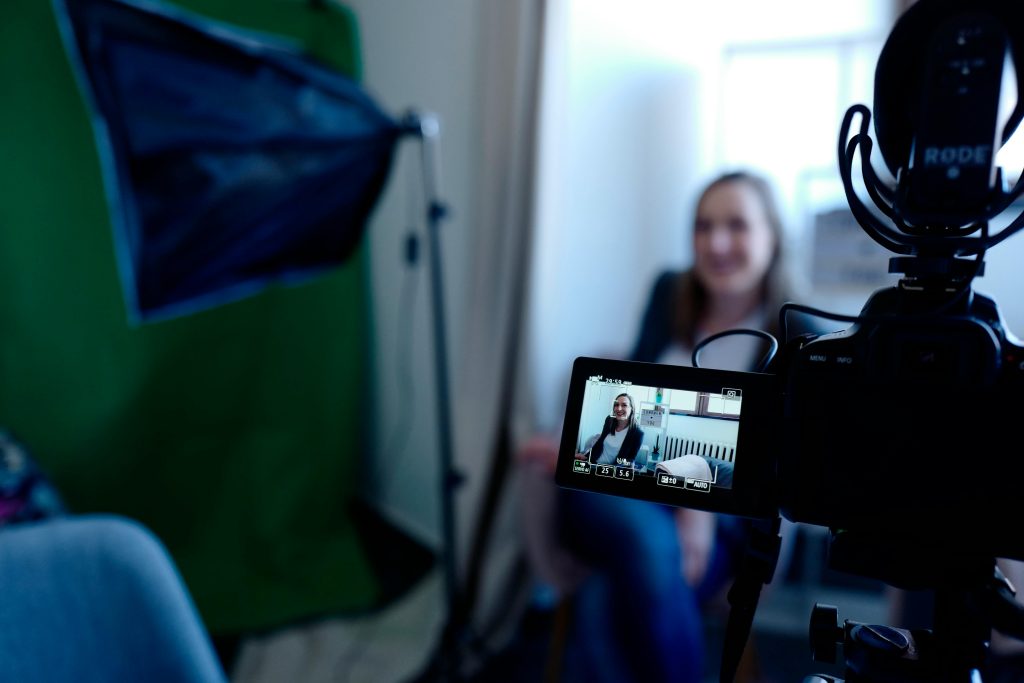
Megan: “I’d like to get your professional opinion on a type of video that a lot of podcasters end up making for the first time. And this is where they release to YouTube or to their other channels, talking head video, where it’s just like a zoom recording or a reverse side recording. We are two talking heads side by side and the conversation going on and that being released as the video.
Do you think that’s a good strategy, an okay for now strategy, or should people be doing a little bit better?”
Dan: “I love that you said, okay, for now — most people give AB choices.
I think it’s okay for now, especially in you’re early days. And that doesn’t even necessarily mean early days of the podcast. It could be early days of filming your podcast, but put that sign on the door. Okay for now. So you see it every day and it’s like, is it still now? Cause it’s been a few months.
I think at the end of the day, and this oftentimes gets chalked up to editing and people are like, I’m not an editor. We have an editing service and that’s some of our clients. We understand it, but if you can view it as more than it is on its face, on the surface, it can be so much more.
And again, I told you, I was going to say five or 10 things that just sound cliché and cheesy and whatever, but it so can be. And I’ll give you a great example that has nothing to do with podcasting. So you can get your head away from your podcast and just think about video for a second.
I have a lot of people who are like, it’s just me. Maybe I’m on the road. We had a client who traveled around the country and grabbed collectibles from different areas and then put them in his online shop and he would film his adventures. And he’s like, it’s kind of boring. You know, I have to film myself and it’s not like I’m putting it on a tripod a hundred times to show all these different things. I’m just kind of carrying it or pointing it at myself. And I was like, okay, I’m going to break your brain real quick with the most simplistic thing in the world:
Film everything. Don’t talk at all.
Come back and compile it and then talk in your studio and that is a documentary. That’s why we love documentaries. We have the idea, the story, a lot of times the footage too. And then we go interview people and tease the dialogue portion of the story out of them. You can do that too.
So just think about your podcast that way. I’m just going to do a good podcast and film it. Then I can come back as the narrator of my own story and may ooh that part and that part and what I could do is hit record right now and say, hey we just had a podcast. I had someone on who blew my mind and there’s a whole bunch of little spots where this happened but I wanted to share this one with you anyway, roll, it here it goes — and then cut to that we’re talking about.
Two clips no fancy editing just you talking and setting it up and then you on screen with them — boom, it’s got a documentary feel. I’m a fly on the wall and you introduced me to something cool and got me excited about it. There’s so many options that aren’t just two people talking. So it’s okay for now with a touch of don’t let now stick around.”
Megan: “Don’t let now be forever. I love it. And that’s a really fun strategy. It’s really for promoting an upcoming episode. And one of yours, you’re kind of positing one way to level up the traditional talking to talking head style video is to make a documentary style with a portion of it.”
Elevating Your Content with Pre-Production
Dan: “Editing comes into play here. And if you’re making anything where you know editing is going to become part of the play, it becomes a production. And if anything becomes a production, 85% of what makes any production in the world good happens before there’s ever an audience in front of the stage or anyone ever hits record on a camera.
So now you’re talking about pre-production. That’s what makes productions great. It doesn’t mean you can’t turn on camera, talk off the top of your head and have a great piece of content. But if you’re wanting to take it to that next level and editing is a part of it — what are we going to talk about? Where could I maybe interject? Maybe I can throw a surprise in there that I have planned, but the guest doesn’t know about.
When I had my show, I could always tell that people didn’t listen to the show before they were on it because I asked the same question all the time, but it was always a surprise. And it came from my days of making videos in the music industry and interviewing a lot of rock stars and stuff like that.
And I would get to the end; okay, you’ve been touring all over the place. You get the same 20 questions. Every radio station you stop at, blah, blah, blah. I’m sure you’re sick of my questions. I’ve been asking because I was doing it for the label or whatever. Okay. It’s my turn now. What do you wish people would ask you about?
My goodness, did that open up the floodgates. Everything from I have a small guitar company, we make acoustics, we only make 12 a year, and I got a little tiny website and I never get to talk about it. And I would love to share this with you to family trauma that led to the fact that they’re even on stage now. And here’s this backstory no one’s ever heard before.
It opens people up. And so there’s a lot of ways to elevate the production by what you think about before you’re ever on screen with someone.”
Transitions, Title Cards, and Camera Techniques
Megan: “What about on the post end or the production end? Does misusing things like transitions or title cards, does that, in your opinion, tend to add to a final product or does it detract from it? And in which cases?”
Dan: “I think it adds, especially if the content lends itself to it. If it could be chaptered, even if it’s roughly chaptered, I think it really lends itself to that kind of approach.
We’ve set up three angle podcasts before with one camera. So I don’t want to get too technical or down a rabbit trail, but the way we set up studios for those sorts of setups are a 4K camera that’s a wide and two people, but we staged them and set it up just right. So we can punch into one person, the other, or have the wide and have both in one shot and that gives you a hundred options.
You can show them both. You can punch into where they’re both a little bit closer and you’ve gotten rid of the outline. You can punch into one who’s not talking but responding to what’s being said by the other person you see their face. You can slowly zoom into someone as they’re telling a little bit deeper story and the other person fades away and then you cut back out to both and like, wow, there’s so much stuff you could do with one camera getting kind of three shots out of it.
And again, you have to think about that beforehand so everything’s set up appropriately. And then you have to think about it in the edit with a little bit of a storytelling brain of, why would I ever show the person who’s not talking? Because maybe they’re sitting there going, oh, and their mouth is dropped wide open. You want to show that that happened.
So I think those are ways, too, that you can elevate to the technical, again, with preparation being the heavy lift there.”
Megan: “Everyone listening wants a studio and an editor right now. That was a really cool way of thinking about that. And then I really like making it accessible.”
Simple But Not Easy: Multi-Camera Production
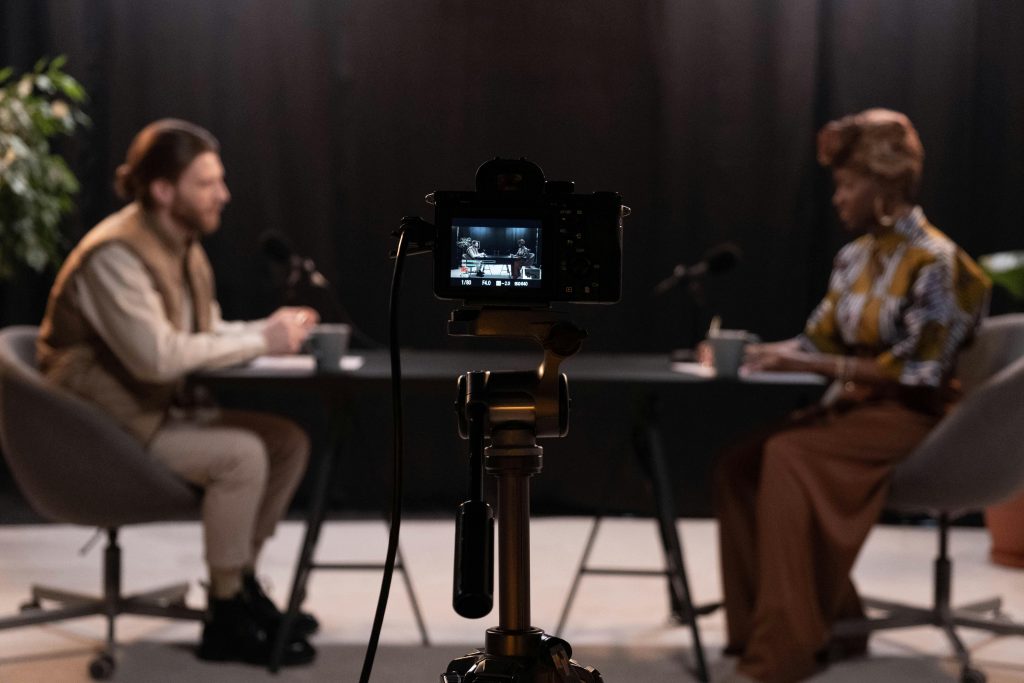
Megan: “I know one of my favorite YouTubers has a two camera set up and every now and then she’ll say something and then turn to the side. It just can be a little kick every time I see it. But when I think about the work involved in setting that up, it’s not going to happen. I’m not going to do it. At least not for now.”
Dan: “What’s funny is it’s easy and super hard because you just said thinking about doing that, yeah. No, thank you. But every time someone hires us to do it, we set all that up and just teach them how to use the equipment.
The possibilities there, but I also always want to talk in terms of people being able to pull this off by themselves. Because that’s really important.
I film solo. I could have a team if I wanted but I’ve just been doing it so long that I just prefer to go a hundred miles an hour and then be done. But yeah, never ever will you hear me say that it’s easy. I’ll always say that it can be simple, but it’s never easy because the hard work comes after the simplicity every time.”
Megan: “I know one of the biggest things that stops me from wanting to record video is simply the time it would take to set up and take down the equipment, the configuring the light, the making sure that the little light donut doesn’t get into my glasses.”
How to Make Video Recording Seamless and Efficient
Dan: “That’s a huge portion of our work. I will say, even though this would lose me a client if someone was talking to me on a sales call, I love the fact that if there’s anything in your surrounding area where that’s possible and it’s even remotely affordable, it’s a great way to do it.
Because you’ll sit there and be like, okay, I’m spending X amount to be in this studio for two hours. I better get as much as I can. The other side of that is where we live. And that’s not to say the side I just described is bad or you shouldn’t do it. You should decide where we live is we help people through three hour studio, get all the right equipment, get set up in a way that is semi-permanent.
Just like me right here, I’m at my workstation right now. My monitors are on arms. I swing them out of the way and now I can see you on my teleprompter. We can have a conversation. And as soon as we’re done, these are going to shut and I’m going to keep doing business, keep editing, keep doing emails right here at the station.
So a lot of our clientele are hybrid, needing to be on calls and create content as well as work. And we do everything we can to semi-permanently, we’re not screwing anything down, but semi-permanently set up this studio space to eliminate as much friction as possible in between having a great idea and comfortably hitting record.
As soon as you say, I don’t want to set anything up, it’s not comfortable, it doesn’t mean you can’t willpower your way through that friction — but that’s not comfortable. And you saying it made my stomach feel uncomfortable because I’m like, oh, I know, right? I hated that.
The last little bit there is sometimes it takes compromise. We actually just didn’t move forward with the client because they didn’t want to compromise. And we really didn’t see a way to help them get the right equipment without that compromise. And it just wasn’t a good fit. And we high-fived and went on our ways.
Sometimes you have to compromise. So we’ve had people who — we can do everything except the camera. I don’t recommend the camera, but everything else mounted to your desk where you can swing it out of the way when you’re done.
So there is nothing to keep you from sitting down and going, oh, I met Julie at a networking event last night. We really connected. Let me hit record real quick. Hey, Julie, just want to make you a quick video. I love that we bonded over how my grandpa raised beagle dogs. We’ll go back to that story. Just want to send this off to you. We should keep in touch.
Then boom, you’re right back to work. And that friction was made minimal, which helps people really get in the rhythm of making video all the time.”
How Small Changes Can Enhance Your Video Production
Dan: “We’ve had people where the desk is either too thick or doesn’t have a lip or they got a standing desk that’s made out of glass. And it’s like, how bad do you want to leverage video in your business? I’m not here to talk anyone into anything, but we’ve had people go out and buy $150 desk, get rid of the old one, sell it on Facebook marketplace so we can clamp everything to the desk.
And now they don’t have to set stuff up every time they record. They just have to turn stuff on and swing it in front of their face. So there’s always a way if someone really wants it, but there’s also sometimes where it’s just a no-go for folks.”
Megan: “I think that’s such a good point. I think it’s an under-discussed point and it’s similar in audio, but the harder it is for you to create the content that you want, the less likely you’re going to do it.
We all have other things to do with our time and just eliminating that friction, I think is such good advice. And doing the difficult thing one time to make it easier all the times in the future. So smart.”
Dan: “I know not everyone’s personality style is this way, but I know someone listening or watching will appreciate this. My personality style is one that if I start going, I get frustrated, something doesn’t work, there’s some friction — I bang my head on something or whatever.
It is horrible. It’s hard for me to reset all the way back into, I was excited to half an hour ago to make this video. It’s hard for me. I’m one of those people that has to fight being in a bad mood. If something goes a certain way, I really got to recenter, go off somewhere, maybe meditate and breathe for a minute and be like, it’s not the end of the world, Dan.
Some people can breeze through that stuff and I love that for them, but some people are like me and can’t. So the more you get rid of that friction, the less opportunity for something to pop up that just kills the whole thing.”
Megan: “I love that. I’m just like that too. It’s for me, it’s less about the emotional when that happens. It’s physical. Cause every feeling I have becomes redness on my face. So unless I want to record looking like some kind of cherry tomato, it’s has to be a Zen process.”
Dan: “It’s so valid. That is so valid.”
Megan: “Because I just don’t own that much makeup or know how to apply it to solve that problem. Oh, and this has been amazing. And I want to be respectful of your time and you have to talk about the body of work principle.”
Dan: “Yeah, nothing too complex. It’s not too long. So I think we’re good.”
The Body of Work

Dan: “If you can, picture a stack of three blocks, and there’s content. So it’s all your videos and all your stuff in a little box. And then there’s one with a little label that shows a battery and a lightning bolt on it. And that’s your energy. And there’s one with a clock on it. And that’s your time.
No matter what we do with content, we’re spending energy and time and there’s got to be something to show people. That’s the content. No matter what business you do, if it’s got an online element, even if you have a warehouse and you manufacture something and sell widgets, you might still have a website. There’s almost always some digital component if you’re online at all.
The next step is how do I grow my online business? If you ask that question to YouTube or Google, a vast majority are going to be the ones who speak the loudest, spend the most on ads, have the biggest following, and get the most space. And they’re generally saying, build a big audience, get 10,000 people on a list, 1,000 will pay attention, 100 will show up, 10 will buy — that’s your funnel.
Nothing wrong with that at all. But so many people think that’s the only way to do any business online. And so what we do is we shift. Now we’re going to go to the other side of the table. Got a content box, you got a battery box, you got a time box, just like on the other side. It’s even the same content. Nothing’s different.
On the previous side, we spend that time and energy trying to grow an organic audience. I’m not saying don’t do this. I’m not saying it’s a bad play. I’m just saying there’s another way. So shift to the new side. We look at our energy and our time, and then we start looking at the content as a body of work. This is all the things you’re good at.
If you came from corporate and you have an expertise, it still applies to your business, even if you’re in a different sector. You have your life experience. You have your human experience. There’s so much you bring to the table.
A lot of times that in a job, you never get to express because it doesn’t fit within the confines of that corporate structure. There’s so much there. That’s your body of work. We focus on taking that content and then spending the time and the energy, getting it in front of people who already care about what you’re talking about. Same time and energy it would take to grow an organic audience. Hopefully get it to this number that goes down to this number and this much pay attention and that much by month over month.
We have a lot of clients who don’t get a lot of views on their videos, but make a lot of money because that time and energy is spent on where’s this video go? Where in the solar system is it placed? What job is it out there doing for us? And are we paying attention to how well it’s doing that job?
And so that’s the body of work that we do is taking that time and energy and spending it in a different way. And that’s why we focus on professionals and entrepreneurs and not just people looking to grow on the internet. So that’s in a nutshell, kind of how I approach it with most clients.”
Engage and Serve Your Audience with Strategic Deployment
Megan: “Not that I don’t want you to reveal all of your secrets, but it sounds like that kind of putting it in front of people who already care, would that mean strategically deploying it or directly saying, Hey, you, person that I’ve just met, this video is going to interest you.
Is that the level that you’re talking on or more finding places online, sharing it there?”
Dan: “It’s a little bit of both. I’ll give it a 70-30 split to the first that you said. This is like a violent example. So I need a new example that’s not so violent.
I think of old cowboys and old Westerns and they got the bullet belt. They only got a six shooter, so they got to keep some ammo in their belt. I think about being able to deploy your body of work, like putting a bullet in a boom, hitting a target.
So I’ll have someone — even though I don’t do work around this. I don’t charge money to do this. I don’t even spend a lot of time on it — who’d be like, oh, I got a smartphone. I got a video of five tips on how to use a smartphone to create great video. It lives on my YouTube channel. If someone says that, I’m like, hey, I don’t directly help people with that work, but here’s a great video I made free. Go watch it. So I’m able to deploy those so strategically.
Then the other part is where they live is part of the deployment as well. So you can, in that same vein, say, oh, you’re worried about your camera presence because you’re a bald guy with a graying beard. Guess what? So am I, here’s what I know about makeup and what I know about hair care on your face or whatever.
Then I’m able to send them somewhere around camera presence, strategically put calls to action at the end of those moon videos that are: if you learn this, here’s what to learn next. This is how you dial it in — all the way to a planet video: here’s the deep dive on how to achieve great camera presence without spending any money. But if you want to work with a pro, here’s me as well. And I can get you there really, really fast.
And all the way are like throwing darts at a target, really trying to hone in. I could just put up videos, run ads and try and get as many people on my newsletter, as many people on my YouTube channel as possible. But that hasn’t worked too well in my career.
So I’ve kind of shifted to this more of, either throwing the dart and trying to hit something or taking someone to the content because they asked a specific question, which, they’re kind of the same as each other, but they’re a little bit different in how you deploy them.”
Megan: “I love that. It’s like the gentler form of marketing, despite your metaphor.”
Sales as Service: Using Video to Provide Value
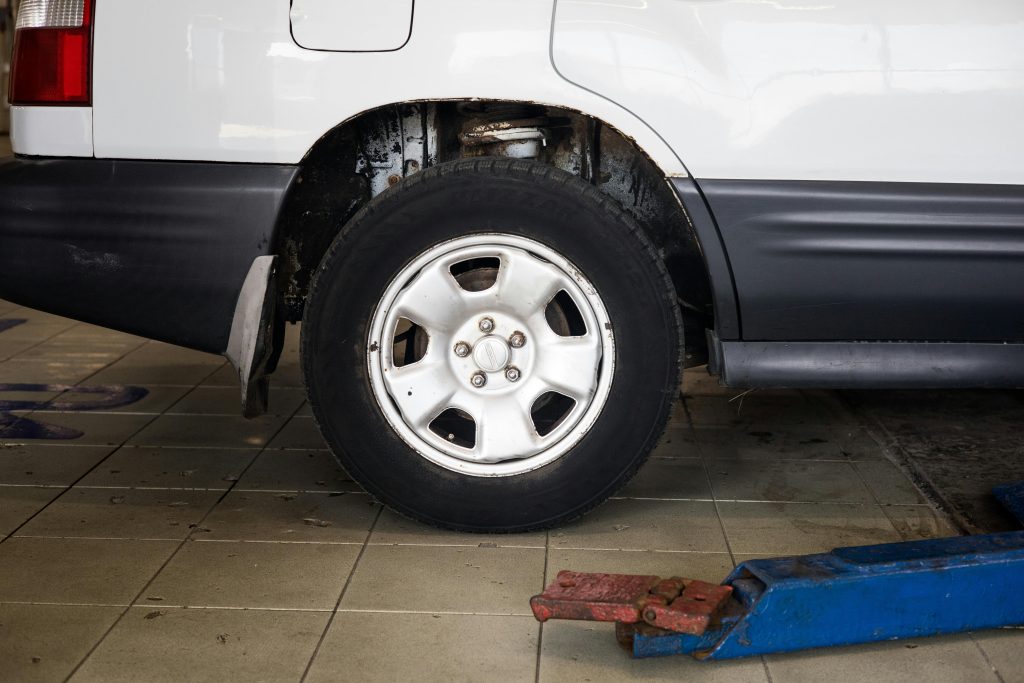
Dan: “I’m not anti sales. I’ve sold plenty of my life. I don’t think salesmen are bad people. I know not every sales person’s a car salesman type. But I like to think of sales like having a full size jack in the trunk of my car.
If you got a flat tire and I got a full size jack, hey, I see you. You’re having tire trouble. You got that scissor jack. It looks like your car might fall over. If you got 10 bucks, I got this thing. You can have it all day long. Just use it. Be safe. I’ll come back, get it later.
Two things:
One, I’m never pulling over if I see steam coming out of your radiator, because you don’t have tire problems. I’m not going to try and sell you a jack.
Two, if I pull over and I’m like, hey, you’re having tire trouble. Would you like to rent my jack? And you’re like, get out of here, buddy. Scram. I still sleep well because you had a tire problem and I got a jack. I didn’t do anything wrong. I just offered up what you needed.
I love that about video as well. I don’t need to go convince people video is important. I need to talk to people who are already like, man, video is important. What do I do? I just wish I knew the next steps. That’s who I’m talking to. So it’s a way I try and look at it.”
Megan: “I like that. And then the end of it, the videos that you and your clients are creating, especially if the business owner is the talent, you’re almost sending a little invoice out into the world to do that same job for you, even though you can’t be there personally. Really, really love that.”
Dan: “It can happen while you sleep too. And there’s all that get rich quick stuff on the internet and all that make money when you sleep, but you literally can look at analytics and see that over in the UK while I was sleeping, someone watched this video and then commented and asked for my email and then we spoke.
You literally can see things happen while you sleep. And they’re just little soldiers out there doing work for you all the time when they’re placed right.”
Megan: “It’s amazing how that could happen. I remember I had a friend, he made music, and we were all young and irresponsible, so we were up very early one morning, stayed up very late the night before.
Then he bursts into the room, he says, guys, I’m huge in Norway. And he just had this weird spate of downloads in Norway. It was a very fun moment, but you never imagined that kind of thing can happen. But we see it in analytics all the time. You’ll get a spike of listeners in Japan. It’s because someone found your episode and shared it around. And it sounds like it can work the same with video.”
Dan: “A hundred percent. I could wax on that all day long. I’ve got so many examples from so many places where video just leveraged windows and doors wide open for people and that video has got six views. You know what I mean? It’s really powerful.”
Megan: “I love it. And let that be a reminder to everyone who is a little anxious or worried about the downloads. I know we see it in podcasting all the time. It sounds like it’s the same in video.
Low views don’t matter if they’re the right views. Don’t take them hard.”
Connect with Dan Bennett
Dan: “If you can remember Video for Entrepreneurs, you’ll be able to find me anywhere.
But what I did that was kind of fun and came at the suggestion of a friend a few years back was I bought the URL danhaslinks.com. And if you go to that, it’s just all my links in a stack that you can click on.
And even though I’m not super heavily involved in every social media platform, I’m still on everyone because I have to research them for my clientele. So I’m always up on the latest trends and stuff. So you literally can, if you DM me anywhere or email me, I’m going to get it and respond.
We always do free strategy calls. They’re 15 minutes. If you go to my website, I always like to do a half an hour. Anytime someone lets me have access to their platform and their audience. No gimmicks, no sales, no pressure. It’s just strategy.
So come with your hardest questions, whether it’s about tech, software, YouTube, anything, and I’ll solve as much of your problem as I can in a half hour. No strings attached because I just like getting people unstuck so they’re not so tied down burdened by video.”
Final Thoughts
One of the things I like best about Dan’s strategy is his focus on starting where you are and building up from there. You don’t have to do everything all at once and your first attempts don’t have to be perfect.
If you’re interested in getting started with video or you want to level up the video that you’re currently creating, check him out here and grab his extremely generous offer of a complimentary strategy call.
Podcasting for Business
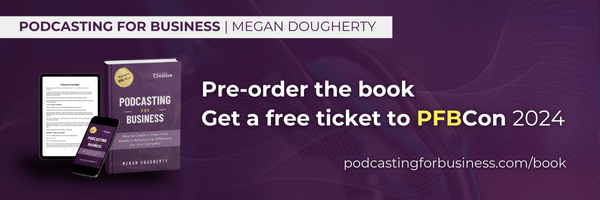
We are gearing up over here at One Stone Creative for the launch of my new book, Podcasting for Business — how to create a show that makes a bottom line difference for your company.
The official launch date is on September 10th, just a couple of weeks away. And if you decide between now and then that you’d like to pre-order a copy, then I would be thrilled to give you a completely free ticket to this year’s Podcasting for Business Conference.
The book is comprehensive. My spouse called it both amusing and exhaustive. It covers:
- the Business Podcast Blueprints
- how to use Podcast Value Math to measure the right things for your business
- how to choose a goal that’s actually going to make an impact
Then we go into 15 specific business outcomes that we call the metrics that you can optimize a show for to start seeing those results in your business.
I’m very proud of it, and I think you will get a lot out of it. So, if you would like to pre-order that, you can do so here. If you do so, you will get my undying gratitude and the free ticket to the Podcasting for Business conference, which is going to be a great event this year.
Podcasting for Business Conference
We’ve got over a dozen expert presentations, expert Q&A, panel discussions, workshops, and lots and lots of networking opportunities.
It’s happening November 13th to 15th this year, so if you want to attend for the bargain price of a $10 ebook pre-order, you can get all of the details here. I very much hope you do that and I cannot wait to see you there — it is going to be a great time.
Be A Guest on The Company Show
Do you have a podcast that’s making a major difference in your business or know one that is? Fill out this contact form and let us know about it.
We’d love to have you here for an episode like this one!
Need A Podcast?
As always, this is Megan Dougherty, and The Company Show was made possible by the team at One Stone Creative.
If you know a business owner that you think should have a podcast, do us a favor and send them to podcastingforbusiness.com!
Key Quotes
“ I’ve got so many examples from so many places where video just leveraged windows and doors wide open for people and that video has got six views.” – Dan Bennett
Resources
One Stone Creative | LinkedIn | Twitter | Facebook | Instagram
- Pre-order the book, Podcasting for Business
- Pre-ordering will get you a free ticket to PFBCon 2024
Learn about what other business podcasters are doing:
Dan Bennett | Website | LinkedIn | Instagram | Complimentary Strategy Call

